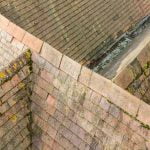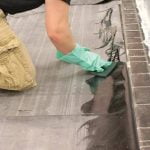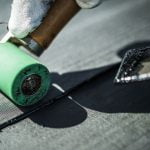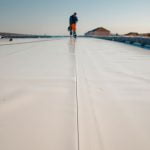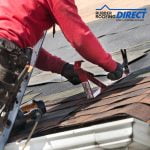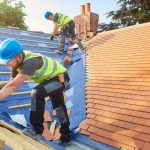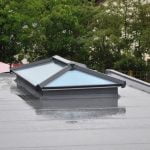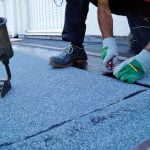Guide to Finding the Best Roofing Tiles
Which roof tiles are best in the UK
The roofing market is saturated with choice, and with so many types of roof tiles available, it can be difficult to decide which type will be best for your project. Whether you’d like to opt for traditional tiles like classic concrete or clay, or something more innovative like metal or slate, it’s important to understand each system inside and out to know which one will work best for you.
Types of Roof Tiles
It’s important to note that no two kinds of roof tiles are the same, and each variety will offer its own strengths, advantages, durability, aesthetics, ease of installation and limitations. So, to help you with your new roofing project or re-roof construction, our experts have sat down to weigh up the pros and cons of each option below…
Choosing the right UK tile
Before deciding which roof tiles you’ll need, consider your property and how to choose the right ones. For example, to narrow down your search and pick the right tile for your project, consider several factors.
The pitch and design of your roof structure will impact the number of roof tile options you have. For example, you’ll need to consider the pitch of your roof; if it’s low or flat, then certain types of tiles won’t be suitable for installation. Perhaps in this scenario, you don’t want to search for tiles but rather flexible rubber membranes like EPDM.
No homeowner wants an ugly roof, so when choosing between tiles, you’ll want to consider the kind of finish it will create for your property. So, if your residential home has period features, a sleek, modern slate, lightweight roof tile likely won’t be the right fit. You’ll also need to select a shade that coordinates with the property’s external colour scheme and does not clash against the brick. On top of this, you’ll need to consider neighbouring homes and properties to see how your new tiled roof will fit into the natural flow of the street you live on.
Another important factor is where in the country you live, as a variety of tile profiles are distinctively used across certain UK regions. So, you might want to research the significant profiles in your region, which might completely influence your choice. Considering how your property will be affected by the local climate is a no-brainer for ensuring your roof’s longevity. Do you live in a windy area with regular rain, storms or hail? Is your home close to the sea? Do you experience hot summers and frequent lightning storms? These are all the questions you’ll need to answer to find the right tile with the correct durability and resilience to withstand the typical weather conditions in your area.
You’ll also need to be aware of any restrictions the local authority implements that could restrict your tile choice. For example, planning requirements and restrictions might require you to pick a type of tile that blends in with the aesthetics of your neighbourhood. In some instances, other modern types might require specific approval based on environmental concerns.
When replacing a roof, the costs are not always cheap. So, whether you’re ready to spend without limits or to work affordably as possible, this is another easy way to narrow down your search for the best roof tile. When finding a roof tile best suited to your price range, you’ll also have to bear in mind the additional costs, which include installation, transportation, maintenance and the upfront cost for the tiles.
Which roof tiles last the longest?
- Concrete tiles: Typically budget-friendly, beginning at £0.50p per tile, and are the ideal choice for a practice roofing material that can also help save money on energy bills. Concrete tiles can be used on roofs with a lower pitch but are heavier than clay, so the roof structure needs to be suitably strong to bear the weight. On top of this, concrete roof tiles, while typically 20% cheaper, do not weather as well as other tiles like clay.
- Fibre cement tiles: An affordable alternative to slate, fibre cement tiles mimic the aesthetics and characteristics of slate but at a lower price. They’re lightweight and durable, plus easy to install and maintain. They must be installed on pitches greater than 15˚ and less than 75˚.
If you have a low-pitched or flat roof, EPDM is affordable and cost-effective.
- Slate tiles offer a luxurious yet natural style appearance that’s modern and ideal for contemporary property styles.
- If you want an alternative to slate or a more affordable option, you can research lightweight roof tiles, which will look great for modern houses as they are versatile in design and available in a wide range of styles and colours.
- Metal roofs are also emerging as a popular roof material. For example, standing steam metal roofs are unique and modern, improving any contemporary home’s aesthetics.
Clay tiles are a classic choice for traditional-style properties, as they add charm and character to a building. There’s a huge selection of clay tile profiles available, which will give you the freedom to create a roof finish that’s unique to you while still maintaining the timeless feel of your home. On top of this, metal roofs can mimic the aesthetics of clay and concrete while offering an easier installation and ageless aesthetics.
While we’ve discussed the tiles that suit various property requirements, let’s explore typical roofing projects and other practical options. For the options below, we recommend EPDM as a cheap, long-lasting material that will complement any contemporary or traditional home. EPDM is flexible, long-lasting, cost-effective, and easy to install and maintain. It should be your leading choice against any other type of tile or material.


